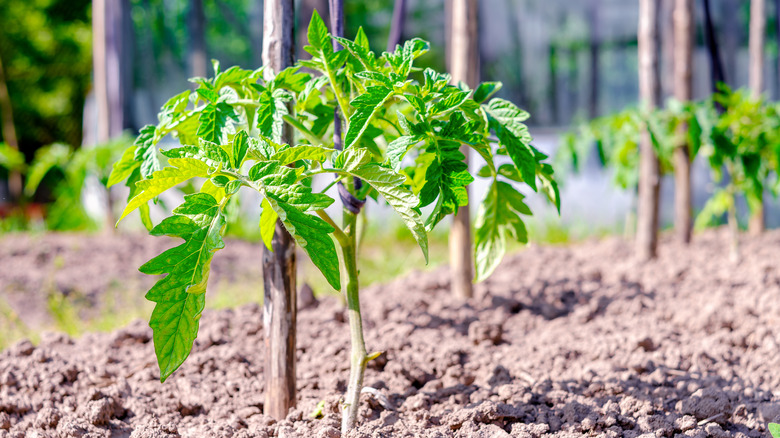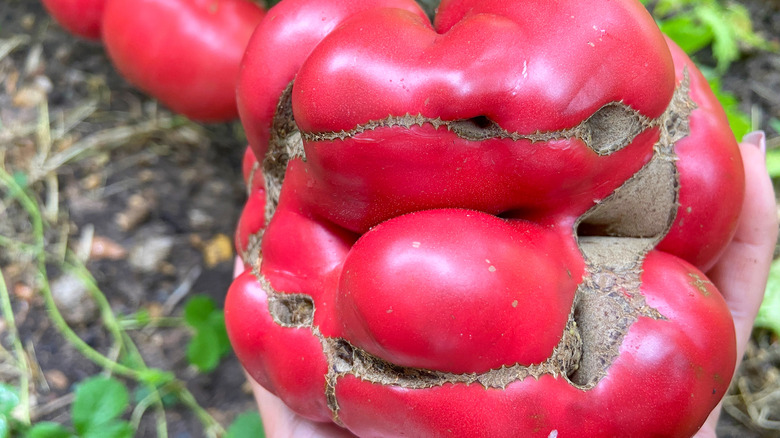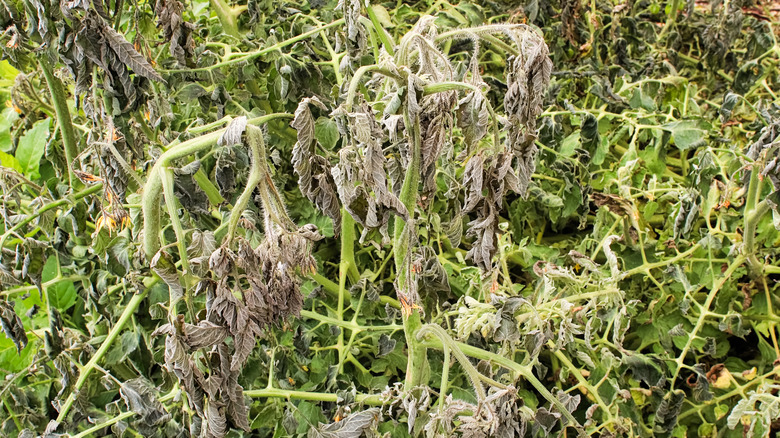What Really Happens When You Plant Tomatoes Too Late In The Season
You know it's springtime when the plant nurseries bring out the tomato transplants. If you have any experience growing tomatoes, then you're familiar with the fact that there's a certain window you need to plant seeds and another for when you need to transplant seedlings outside. But life doesn't always align with the preferred guidelines, so what happens if you miss that window? Planting too late in the season can bring you some problems. A late spring planting will lead to hot summer temperatures interfering with your harvest, whereas, a late fall planting will result in a cold snap killing your plants.
Following the recommended planting guidelines for your area is advised since there are consequences to planting too late. Some problems can be dealt with, so you're not entirely out of luck if you're a few weeks late to the party. But, you will have to adjust how you raise your plants so you can increase your chances of a successful harvest.
Planting too late in the spring
Tomatoes need temperatures between 55 and 85 degrees Fahrenheit, and they can be finicky to care for in certain parts of the year. Sporadic spring temperatures that jump from cold nights to almost hot days can lead to catfacing, a condition causing cracks and deformation on the blossom end of the fruit. If you missed planting right when the temperatures started staying above 55 degrees Fahrenheit or wanted to wait until the up and down temperatures have passed, you may end up with very little fruiting over the summer.
Once the temperature warms up to over 85 degrees Fahrenheit, it will be too hot for your large tomato varieties to function comfortably. (Grape and cherry tomatoes are usually fine.) They may continue to produce flowers, but they likely won't turn into fruit. Instead, the flowers will shrivel and fall off the plant. If the temperatures rise while you have developing tomatoes, they won't turn red. This can greatly affect your summer harvest by reducing the number of tomatoes to harvest.
If you do have to plant late, use a thick layer of mulch and shade cloth in the summer. Each of these benefits the plants greatly, and when used together, your plants will breeze through the abysmally hot weather with ease. If those aren't an option, keep your plants watered, and when the temperatures cool down in late summer and early fall, your plants will likely start producing again.
Planting too late in the fall
Gardeners in the warmer zones often plant two rounds of tomatoes – one in the spring and one in late summer. In these areas, summer is often too brutal to have a successful summer harvest. Some gardeners pull tomato plants out in July and transplant new ones in August once the temperatures are back to the ideal range. However, this method won't work for everyone. Tomatoes usually need the entire season to grow in cooler zones, and there won't be enough time before the first frost to get a second round going.
If you plant too late in the summer or fall, you risk cool temperatures hurting your plants. If the temperatures drop below 55 degrees Fahrenheit, the pollen could become sterile, and the plant will drop the blossoms. Tomatoes growing on the plant may become catfaced and should be removed from the plant so the plant's energy won't be misplaced by trying to develop the deformed fruit.
If you want to plant in the late fall, you'll need to plan for it. Start your seeds indoors in early summer and transplant them when the temperatures are consistently below 85 degrees Fahrenheit. Choose a fast-maturing tomato variety that can mature in about 55 days since there are only about 60 days from the end of August to the beginning of November. If you can transplant sometime in August, you should have plenty of time to get at least one harvest before your first frost.


